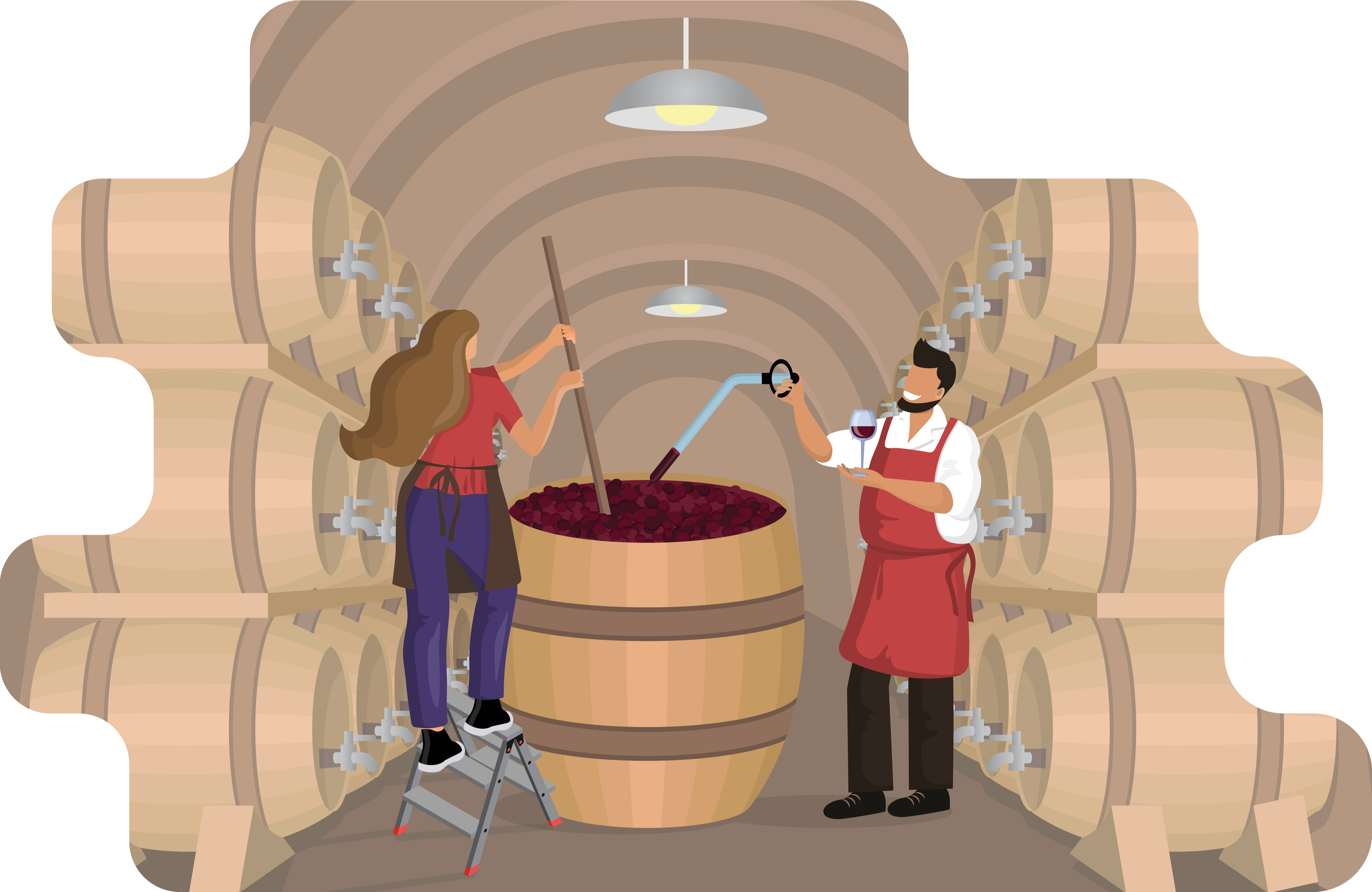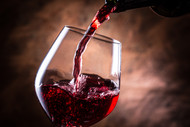How Does Sugar Create The Perfect Wine?
By on Jan 25th 2021

Perfect Sugar, Perfect Wine
Sugar is probably the most important ingredient when making wine. Sugar is used as food for the yeast and turned into carbon dioxide and alcohol. Generally, sugar is introduced naturally from the grape. Throughout history there have been many different methods to increase the sugar content of a wine.
One of the ways is by allowing the grapes to dry out more. Either while they are on the vine by twisting the stem, or when they are off the vine sitting in the sun. This will increase the sugar content by allowing some of the residual water to evaporate.
Another way would be to over ripen the grapes by harvesting them later in the season. This would also increase the sugar content, but they would not be as acidic as grapes harvested earlier.
What Do I Need to Know About Sugar?
You have probably heard of “Table sugar”, “Glucose”, “Sucrose”, and “Fructose” but which of these are in wine? The three sugars that are found in wine are glucose, fructose, and a little bit of sucrose.
Glucose is made from starches (could be from a variety of plants) using enzymes. It is what commonly circulates in our blood and is broken down in the pancreas, which produces important hormones like insulin. Fructose is primarily found in plants like in this case grapes.
Fructose comes from sugar cane, sugar beets, and corn and is further concentrated from these sources. Sucrose is commonly referred to as table sugar and is basically glucose and fructose stuck together in one package.
Sucrose comes from sugar cane and is extracted using hot water. These are the basic sugars, but they might have different commercial names. Glucose sometimes goes under the name Dextrose.
Dextrose is chemically identical to glucose, and the names are used interchangeably. Fructose and glucose are also commonly found in High-fructose corn syrup (HFCS), with the concentration of fructose and glucose varying depending on the type.

Why is it important to know all this about different sugars? They are not all created equally, and they do not all taste the same. Some sugars are sweeter than others. To determine their relative sweetness, we compare them all to sucrose.
So how do they stack up? Let’s start with the sweetest of them all, Fructose. Fructose is about 50% sweeter than sucrose. On the other hand, glucose is only 80% as sweet as sucrose.
How Much, and What Kind of Sugar Is In Our Wine?
Now that we know a little about sugars, how much of each sugar is in wine? Turns out it’s not that easy. The sugar that is present in the highest concentration might vary on how ripe the wine is.
Generally, the earlier a wine is in its ripening stage the more glucose there is, then as it continues to ripen fructose takes over as the primary sugar. Although sucrose is present, it is not usually present in high quantities.
Something important to note is that yeast eats glucose first (glucose is easier to convert). This is important because as we mentioned, not all sugars are created equally, and it is important to know what sugar you are working with in order to create a great taste profile.
So now that we learned about what sugars are in wine how can we use this sweet knowledge? There are few different reasons we would add sugar to our wine and a few different methods to add them. The two main differences are adding sugar before fermentation is completed and after it is done and stabilized. So, let us get into it.
Increasing the ABV by Adding Sugar Before Fermentation
In a colder climate the grapes sometimes struggle to reach ripeness and may be harvested with lower sugar content. It is important when making wine to have at least 9 – 10% (ABV) alcohol content, if it is lower than that the wine could potentially spoil. Although there are some exceptions, that is generally the case.
There are a few ways to fix low alcohol content. One is called Chaptalization; some regions may not allow this, but in other regions it is a necessity. So, what is this controversial yet effective technique?
Chaptalization is just simply adding sugar (usually sucrose) during the fermentation stage to increase the wine’s final alcohol content. Although some places might outlaw it, it is necessary in some parts of the world that have a colder climate.
Increasing the Sweetness After Fermentation and Preserving Flavors

There are two primary ways to increase the sweetness of a wine after fermentation. Back sweetening is probably the simpler one which involves adding sweetener after the wine is Racked multiple times and stable. This is one method I use when homebrewing. You could buy specific wine sweetener or use your own sugar.
A little tip if you do use regular sugar (sucrose) is to invert the sugar or turn the sucrose into glucose and fructose which would naturally happen over time in the wine due to acidity. This can be done by simmering a mixture of 1:1 water to sugar with a bit of citric acid for approximately 20 minutes.
The reason you invert the sugar is to get an accurate taste, you don’t want the sweetness to change over time when you finally determine what you want. You could potentially even use a lower-calorie sweetener if you so please.
The next method is a bit more complicated and requires some extra toys, it is called cold crashing (can be done with beer as well). This method does offer some nice benefits, it is better at bringing out fruity aromas and is generally considered to taste better. Although it does have some great flavors it is also a bit more challenging than other methods.
One potential problem is to cause the yeast to release hydrogen sulfide (by using a yeast that is unable to deal with the rapid temperature change) which smells bad, and the need for jacketed tanks or larger refrigeration units. These can be easily avoided by a skilled brewer by choosing a yeast that does not produce a lot of hydrogen sulfide and using a refrigerator that can meet the temperature requirements.
Once you have reached your desired alcohol by volume and sweetness you may begin the cold crash. This is done by rapidly cooling the wine to 28°F to 35°F to stop the yeast in its tracks and pause the fermentation process. After it is rapidly cooled it can be allowed to rest at this temperature for 5-10 days.
After this the wine can be racked to remove the inactive yeast and other particles, this should be repeated until it is clear. You may even want to back sweeten the wine once it is stabilized if you would like to change the taste. This method is all about preserving the original fruity flavors.
Ingredi.com carries 2 types of sugar, linked below!
Sugar Extra Fine Granular | 50 lbs Bag
(This is 100% sucrose, per the data sheet provided)
Dextrose, Clintose A | 50 lbs Bag
(This is 91.5% dextrose, per the data sheet provided)
Sources:
https://daily.sevenfifty.com/understanding-the-role-of-sugar-in-wine/
https://vinepair.com/wine-blog/what-is-chaptalization/
https://www.mdpi.com/2306-5710/1/4/292/htm
https://winefolly.com/tips/wine-additives-chaptalization-vs-acidification/
https://winefolly.com/tips/alcohol-content-in-wine/
https://www.smartwinemaking.com/post/2017/07/08/sweetening-homemade-wine#:~:text=Simply%20put%2C%20back%20sweetening%20is,form%20of%20sugar%20before%20bottling.&text=2.,This%20is%20very%20important!
https://www.scienceofcooking.com/food-and-wine/sugars-in-wines.html
https://www.beercraftr.com/how-to-use-hydrometer-to-measure-abv/
https://winefolly.com/deep-dive/sugar-in-wine-chart/
https://www.northernbrewer.com/blogs/brewing-techniques/short-pour-cold-crashing
https://foodinsight.org/what-is-fructose/
https://www.liftglucose.com/what-is-the-difference-between-glucose-dextrose/
https://www.wineinvestment.com/wine-blog/2020/05/how-is-the-sweetness-of-wine-measured/
https://www.washingtonwinemaker.com/blog/2012/08/03/sweetening-wine-with-splenda/
https://pubmed.ncbi.nlm.nih.gov/17955190/
https://www.healthline.com/health/glucose#takeaway
https://www.cfpwinemakers.com/blog/post/?Preventing-Hydrogen-Sulfide-in-Your-Wine-33






